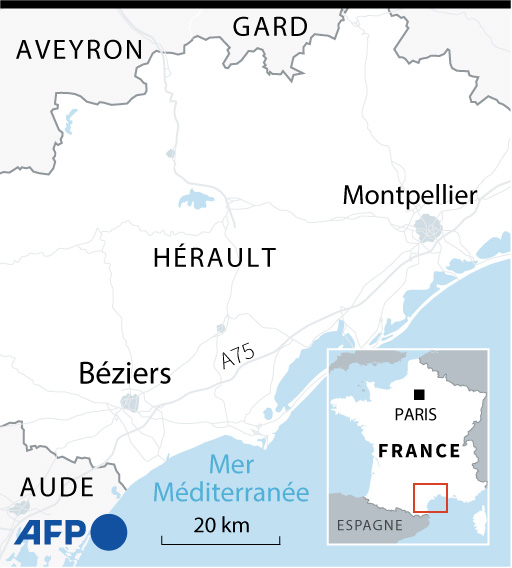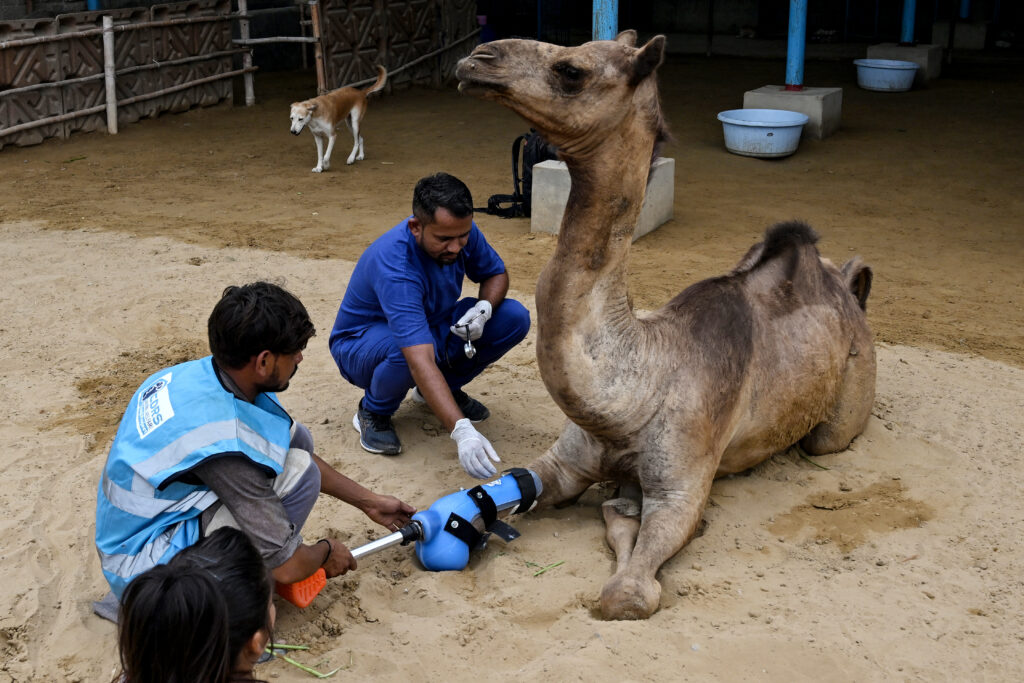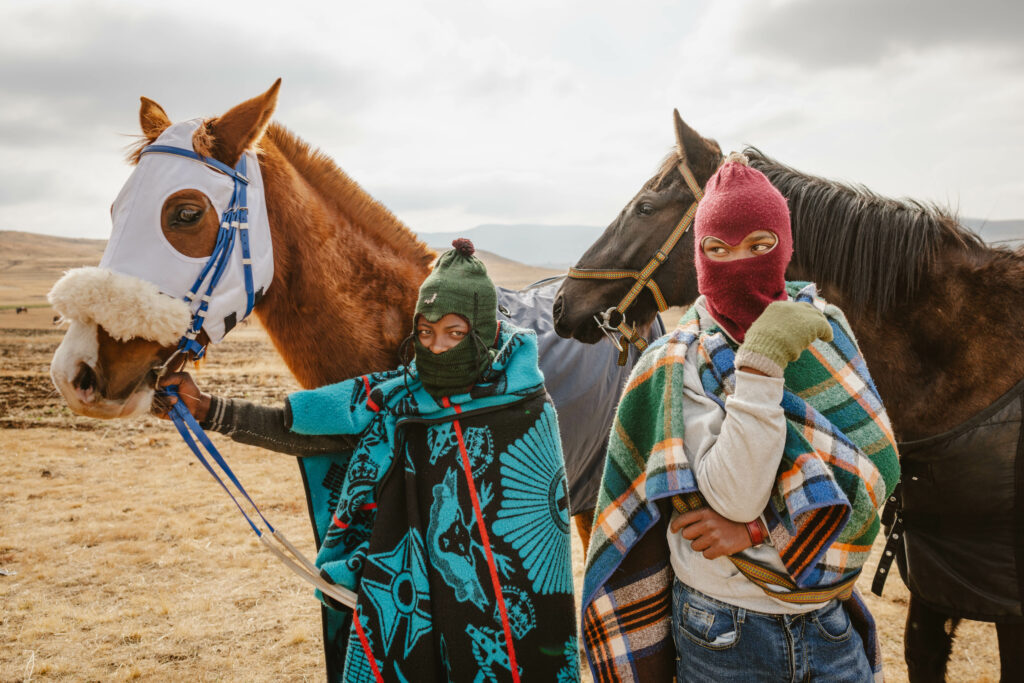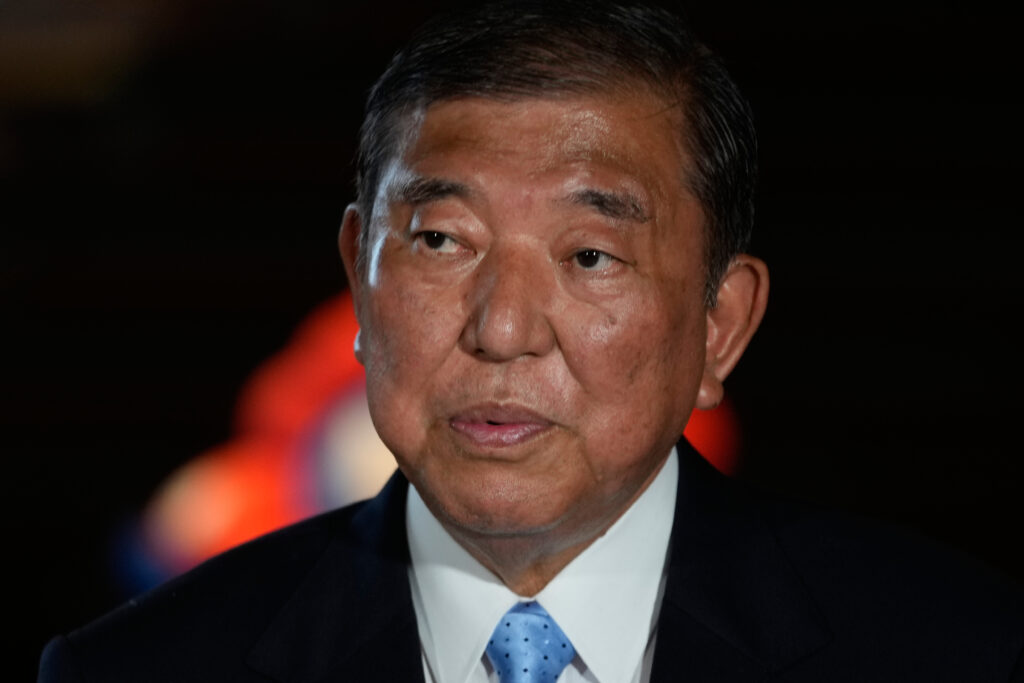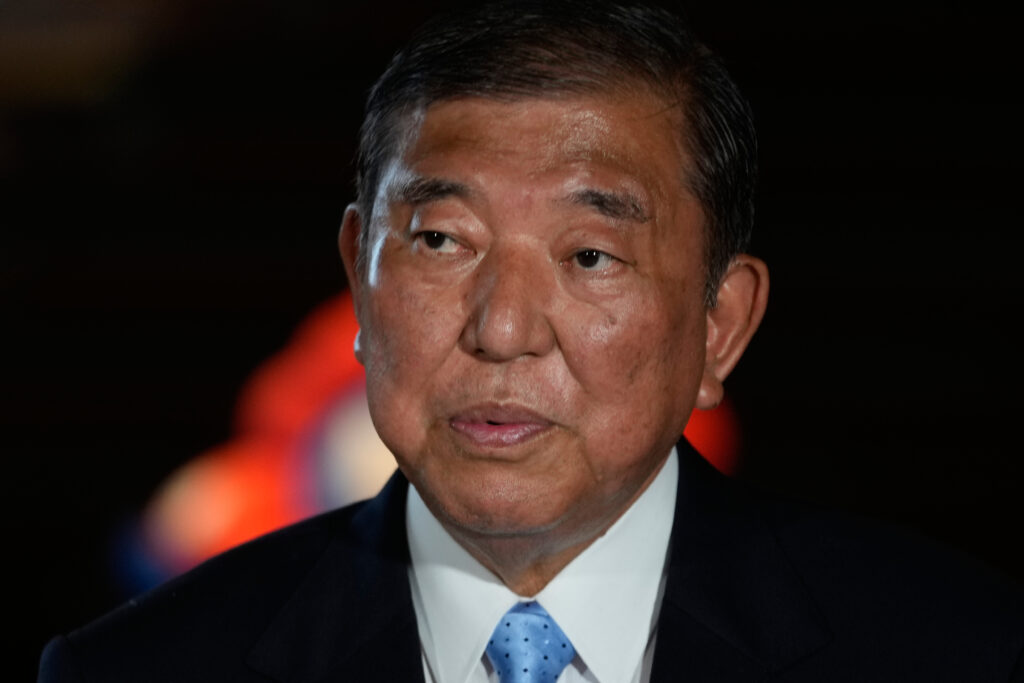Violences à Béziers: guet-apens tendu aux policiers, un appartement incendié
Un guet-apens tendu aux pompiers et aux forces de l’ordre a dégénéré samedi soir dans un quartier gangréné par le trafic de stupéfiants à Béziers (Hérault), faisant un blessé parmi les policiers et provoquant l’incendie d’un appartement touché par un mortier d’artifice.La police comme le parquet parlent d’un piège tendu aux forces de l’ordre, dans la nuit de samedi à dimanche, dans le quartier paupérisé de la Devèze.Les fauteurs de trouble “ont contacté eux-mêmes les pompiers pour un feu de poubelle (et) ils étaient près d’une cinquantaine, dont certains sur les toits des immeubles”, à leur arrivée, a rapporté à l’AFP le commissaire Eric Agniel. Les pompiers ont alors contacté la police, entraînant l’arrivée de plusieurs membres de la brigade anticriminalité qui se sont retrouvés “piégés par des individus”, poursuit-il. Ce qu’il qualifie d'”émeute” a finalement été stoppé à la suite de l’embrasement d’un appartement, touché par un tir de mortier d’artifice pendant ces violences.”Le mortier a embrasé l’appartement et a nécessité le sauvetage au moyen de l’échelle d’une personne bloquée au 4e et d’autres personnes réfugiées sur le toit. Les secours ont dû intervenir dans une situation tendue, sous protection des forces de sécurité intérieure”, ont précisé les sapeurs-pompiers de l’Hérault.Le sinistre a totalement détruit l’appartement de 130 m2 où vivait une dame avec ses trois enfants majeurs, sans faire d’autre victime que le chat. Une dizaine d’occupants de l’immeuble au total ont été évacués.Sur Facebook, la municipalité, dirigée par Robert Ménard, anciennement proche des figures de l’extrême droite Marine Le Pen et Eric Zemmour, a annoncé avoir relogé la famille sinistrée, qualifiant ces violences d'”inadmissibles”. Un policier a été légèrement blessé au mollet, également par un tir de mortier, précise de son côté le commissaire Agniel.Pour le procureur de la République de Béziers, Raphaël Balland, “ces faits seront susceptibles d’être qualifiés de violences avec arme, dans le cadre d’un guet-apens, et sur personne dépositaire de l’autorité publique, (et) de destruction volontaire par incendie du bien d’autrui, et font encourir 10 ans d’emprisonnement à leurs auteurs”.- Renforts policiers -Le magistrat confirme que ces événements “sont probablement en rapport avec une série d’interpellations de petits revendeurs et la saisie d’une importante quantité de stupéfiants ces derniers jours dans ce quartier”. Un mineur soupçonné de revendre des stupéfiants avait ainsi été déféré samedi devant le juge des enfants, un second devait l’être dimanche et un majeur sera jugé en comparution immédiate lundi, a souligné le procureur.S’agissant des violences de la nuit, aucune interpellation n’a eu lieu à ce stade, selon le magistrat, qui a souhaité rappeler que “tous ceux qui participent de près ou de loin à ces trafics de stupéfiants, en particulier les consommateurs, ont leur part de responsabilité”.De son côté, le préfet de l’Hérault a anoncé le renfort d’une unité de CRS nouvelle génération pour la nuit de dimanche à lundi à la Devèze.Depuis quelques années, des villes moyennes comme Béziers ou Nîmes dans le département voisin du Gard sont rattrapées par le narcotrafic, avec un niveau de violences jusqu’alors réservé à Marseille, épicentre du narco-banditisme dans le sud de la France.A Nîmes, après une succession d’actes criminels graves, le préfet a également annoncé des renforts policiers et la mairie vient de décider d’un couvre-feu pour 15 jours dès lundi pour les moins de 16 ans à partir de 21H00. Cette mesure de restriction est déjà en vigueur à Béziers pour les moins de 15 ans à partir de 23H00, pour la deuxième année consécutive.Au printemps 2024, dans ce même quartier de la Devèze un jeune homme de 19 ans avait été tué près d’un point de deal, écrasé par un véhicule qui l’avait traîné sur plusieurs dizaines de mètres.
Polls show falling US support for Trump’s deportations
Polls released Sunday showed falling support among Americans for Donald Trump’s hardline measures against illegal immigration, as the Republican president celebrated six months back in power.Trump won last year’s election in part with promises to launch a historic deportation drive, riling up his base with exaggerated claims of mass violence committed by undocumented migrants, whom he referred to as “savages” and “animals.”Polls from both CNN and CBS show that Trump has lost majority support for his deportation approach.Fifty five percent of respondents feel the raids — frequently seen online in viral videos of masked, unidentified agents seizing people off the street — have gone too far, CNN said.This was up 10 percent from a similar poll in February, shortly after Trump took office.A majority — 57 percent — said they oppose plans for construction of mass detention facilities, with only 26 percent supporting the idea, CNN said.A CBS News poll found that 56 percent of Americans believe Trump’s administration is targeting migrants who do not represent a threat to public safety, up from 47 percent last month.According to the poll, only 49 percent of Americans approve of Trump’s immigration policies, down from 54 percent last month and 59 percent in February.Support remains nearly universal among Republicans, however, with 91 percent in favor of the deportations.Opposition among independents is nonetheless at 59 percent and among Democrats at 86 percent.Trump marked the six-month mark of his second presidency by heading out to his golf club in Virginia, near Washington, and posting on social media that the period was “being hailed as one of the most consequential periods of any President.””Six months is not a long time to have totally revived a major Country,” he wrote on Truth Social.”One year ago our Country was DEAD, with almost no hope of revival,” he said, adding that now the United States was the “most respected Country anywhere in the World.”In keeping with other surveys, the CBS News poll found Trump’s overall approval rating is underwater. Currently only 42 percent of Americans approve of his job, compared to 53 percent in February.
Pakistani camel relearns to walk with prosthetic leg
Cammie, a young camel whose front leg was chopped off by a landlord in Pakistan’s southern province of Sindh, left her caregivers emotional as she walked for the first time on a prosthetic leg.”I started weeping when I saw her walking with the prosthetic leg. It was a dream come true,” Sheema Khan, the manager of an animal shelter in Karachi told AFP on Saturday.Veterinarian Babar Hussain said it was the first time a large animal in Pakistan had received a prosthetic leg.Cammie’s leg was allegedly severed by a landlord in June 2024 as punishment for entering his field in search of fodder. A video of the wounded camel that circulated on social media prompted swift government action. According to the deputy commissioner of Sanghar, she was transported the very next day to Karachi, over 250 kilometers (155 miles) away, and has been living in a shelter there ever since. “She was terrified when she first arrived from Sanghar. We witnessed her heart-wrenching cries. She was afraid of men,” Khan told AFP. One of the biggest challenges the caregivers faced was gaining her trust.”I cannot put her condition into words,” Khan added. To aid her recovery, the caregivers introduced another young camel named Callie. Her presence brought comfort to the injured Cammie, who tried standing on her three legs for the first time after seeing her new companion. “Cammie had been confined to her enclosure for almost four to five months before Callie arrived,” Khan added. After treating the wound and completing initial rehabilitation, the shelter — Comprehensive Disaster Response Services (CDRS) Benji Project — arranged a prosthetic leg from a US-based firm so she could walk on all fours again. “We don’t force her to walk. After attaching the prosthetic leg, we wait about 15 to 20 minutes. Then she stands up on her own and walks slowly,” veterinarian Hussain told AFP. He said that it would take another 15 to 20 days for her to fully adjust to the new limb. The caregivers said Cammie will remain at the shelter permanently.
Lesotho’s jockeys saddle up for mountain horse racingSun, 20 Jul 2025 14:17:47 GMT
Swathed in vibrant woollen blankets against the biting winter chill, jockeys — some no more than boys — thundered down a dusty track carved between the undulating hills of the tiny kingdom of Lesotho.Spectators lining the ridges cheered on the riders as their horses sprinted down one of Africa’s highest tracks, more than 2,200 metres …
Lesotho’s jockeys saddle up for mountain horse racingSun, 20 Jul 2025 14:17:47 GMT Read More »
Elections au Japon: cuisant revers pour le Premier ministre Ishiba, son avenir en suspens
La coalition gouvernementale du Premier ministre japonais Shigeru Ishiba a perdu la majorité à la chambre haute du Parlement lors d’élections dimanche, un revers cuisant sur fond d’inflation et de forte poussée du parti d’extrême droite Sanseito.Alors que 125 des 248 sièges étaient renouvelés lors du scrutin, le Parti libéral-démocrate (PLD, droite conservatrice) de M. Ishiba et son allié Komeito (centre-droit) n’ont gagné que 41 sièges, selon les projections de la télévision NHK. Loin des 50 nécessaires pour conserver leur majorité. Le parti populiste anti-immigration Sanseito, au slogan “Le Japon d’abord”, fait lui une très forte percée avec 16 sièges remportés selon les sondages sortie des urnes, alors qu’il n’en tient que deux dans l’assemblée actuelle.De quoi exacerber les spéculations sur une démission de Shigeru Ishiba, 68 ans, en fonction depuis dix mois seulement.”La situation est difficile, nous devons l’examiner très humblement et sérieusement”, a commenté dimanche soir M. Ishiba. Questionné sur son avenir, il a répondu: “Nous ne pouvons rien faire avant d’avoir vu les résultats finaux, mais je me montrerai conscient de ma responsabilité”.”D’un côté, certains considèrent que les négociations commerciales toujours en cours avec l’admnistration Trump pourraient lui offrir un sursis. De l’autre, le Premier ministre lui-même avait déclaré viser 50 sièges: avec un résultat en-deçà, il serait probablement logique qu’il démissionne”, a indiqué à la NHK Koji Nakakita, professeur à l’Université Chuo.”Il pourrait être remplacé par quelqu’un d’autre, mais on ne sait pas encore qui”, confirme à l’AFP Hidehiro Yamamoto, professeur de politique à l’Université de Tsukuba.La coalition gouvernementale est déjà en minorité à la chambre basse du Parlement, depuis une débâcle aux élections législatives anticipées de l’automne –que M. Ishiba avait lui-même convoquées après avoir pris en septembre la tête du PLD.Le PLD gouverne le Japon de manière quasi ininterrompue depuis 1955, malgré de fréquents changements de dirigeants.Le Japon pourrait désormais entrer “en terrain inconnu, avec un gouvernement en minorité dans les deux chambres du Parlement, situation inédite depuis la Seconde Guerre mondiale”, rappelle Toru Yoshida, professeur de sciences politiques à l’Université Doshisha.Faute d’une coalition alternative entre des partis d’opposition fragmentés et incompatibles entre eux, “le scénario probable pourrait désormais être une grande coalition entre le PLD et le Parti démocrate constitutionnel” (centre-gauche), principale force d’opposition, estime Hidehiro Yamamoto.-Prix du riz-Minoritaires à la chambre basse, le PLD et Komeito devaient déjà transiger avec l’opposition pour faire voter leurs textes, alors même que la conjoncture s’assombrit.L’inflation reste forte (+3,3% en juin hors produits frais), tirée par une vertigineuse flambée des prix du riz qui ont doublé en l’espace d’un an.”Les prix de base augmentent, mais je suis surtout inquiet que les salaires n’augmentent pas”, soupirait dimanche Atsushi Matsuura, 54 ans, dans un bureau de vote de Tokyo.Pour atténuer l’impact inflationniste, Shigeru Ishiba a étendu les aides au logement, prolongé des subventions à l’énergie, et s’est engagé à verser des chèques d’aides aux citoyens. Les autorités ont également débloqué une partie des réserves stratégiques de riz pour faire baisser les prix, sans succès pour l’heure.Par ailleurs, l’offensive douanière de Donald Trump a fait plonger d’un quart les ventes automobiles vers les Etats-Unis, un secteur qui représente 8% des emplois dans l’archipel. La menace de surtaxes généralisées de 25% au 1er août fragilise le tissu économique nippon, très dépendant des exportations.Alors que le négociateur japonais s’est rendu à sept reprises aux Etats-Unis, les pourparlers avec Washington s’enlisent. Avant l’élection, Shigeru Ishiba avait affiché une stratégie maximaliste consistant à réclamer l’élimination totale des droits de douane. Les marchés financiers s’inquiètent, eux, des dérives budgétaires, les massifs plans de relance et d’aides du gouvernement Ishiba aggravant un endettement déjà lourd. Plusieurs émissions obligataires de Tokyo ont été boudées ces derniers mois, faisant s’envoler les taux nippons.- “Le Japon d’abord” -La poussée du Sanseito, qui empiète sur le vote PLD, était également surveillée de près.Cette formation prône des “règles et restrictions durcies” en matière d’immigration, fustige le “mondialisme”, dénonce les politiques de genre “radicales”, et appelle à refondre les stratégies de vaccination et de décarbonation. Sous pression en raison de positions jugées prorusses, le Sanseito a farouchement nié avoir tout lien avec Moscou.”Ils expriment ce que je pense mais que je ne pouvais pas dire depuis longtemps”, confiait récemment à l’AFP une électrice lors d’un rassemblement du parti.
Elections au Japon: cuisant revers pour le Premier ministre Ishiba, son avenir en suspens
La coalition gouvernementale du Premier ministre japonais Shigeru Ishiba a perdu la majorité à la chambre haute du Parlement lors d’élections dimanche, un revers cuisant sur fond d’inflation et de forte poussée du parti d’extrême droite Sanseito.Alors que 125 des 248 sièges étaient renouvelés lors du scrutin, le Parti libéral-démocrate (PLD, droite conservatrice) de M. Ishiba et son allié Komeito (centre-droit) n’ont gagné que 41 sièges, selon les projections de la télévision NHK. Loin des 50 nécessaires pour conserver leur majorité. Le parti populiste anti-immigration Sanseito, au slogan “Le Japon d’abord”, fait lui une très forte percée avec 16 sièges remportés selon les sondages sortie des urnes, alors qu’il n’en tient que deux dans l’assemblée actuelle.De quoi exacerber les spéculations sur une démission de Shigeru Ishiba, 68 ans, en fonction depuis dix mois seulement.”La situation est difficile, nous devons l’examiner très humblement et sérieusement”, a commenté dimanche soir M. Ishiba. Questionné sur son avenir, il a répondu: “Nous ne pouvons rien faire avant d’avoir vu les résultats finaux, mais je me montrerai conscient de ma responsabilité”.”D’un côté, certains considèrent que les négociations commerciales toujours en cours avec l’admnistration Trump pourraient lui offrir un sursis. De l’autre, le Premier ministre lui-même avait déclaré viser 50 sièges: avec un résultat en-deçà, il serait probablement logique qu’il démissionne”, a indiqué à la NHK Koji Nakakita, professeur à l’Université Chuo.”Il pourrait être remplacé par quelqu’un d’autre, mais on ne sait pas encore qui”, confirme à l’AFP Hidehiro Yamamoto, professeur de politique à l’Université de Tsukuba.La coalition gouvernementale est déjà en minorité à la chambre basse du Parlement, depuis une débâcle aux élections législatives anticipées de l’automne –que M. Ishiba avait lui-même convoquées après avoir pris en septembre la tête du PLD.Le PLD gouverne le Japon de manière quasi ininterrompue depuis 1955, malgré de fréquents changements de dirigeants.Le Japon pourrait désormais entrer “en terrain inconnu, avec un gouvernement en minorité dans les deux chambres du Parlement, situation inédite depuis la Seconde Guerre mondiale”, rappelle Toru Yoshida, professeur de sciences politiques à l’Université Doshisha.Faute d’une coalition alternative entre des partis d’opposition fragmentés et incompatibles entre eux, “le scénario probable pourrait désormais être une grande coalition entre le PLD et le Parti démocrate constitutionnel” (centre-gauche), principale force d’opposition, estime Hidehiro Yamamoto.-Prix du riz-Minoritaires à la chambre basse, le PLD et Komeito devaient déjà transiger avec l’opposition pour faire voter leurs textes, alors même que la conjoncture s’assombrit.L’inflation reste forte (+3,3% en juin hors produits frais), tirée par une vertigineuse flambée des prix du riz qui ont doublé en l’espace d’un an.”Les prix de base augmentent, mais je suis surtout inquiet que les salaires n’augmentent pas”, soupirait dimanche Atsushi Matsuura, 54 ans, dans un bureau de vote de Tokyo.Pour atténuer l’impact inflationniste, Shigeru Ishiba a étendu les aides au logement, prolongé des subventions à l’énergie, et s’est engagé à verser des chèques d’aides aux citoyens. Les autorités ont également débloqué une partie des réserves stratégiques de riz pour faire baisser les prix, sans succès pour l’heure.Par ailleurs, l’offensive douanière de Donald Trump a fait plonger d’un quart les ventes automobiles vers les Etats-Unis, un secteur qui représente 8% des emplois dans l’archipel. La menace de surtaxes généralisées de 25% au 1er août fragilise le tissu économique nippon, très dépendant des exportations.Alors que le négociateur japonais s’est rendu à sept reprises aux Etats-Unis, les pourparlers avec Washington s’enlisent. Avant l’élection, Shigeru Ishiba avait affiché une stratégie maximaliste consistant à réclamer l’élimination totale des droits de douane. Les marchés financiers s’inquiètent, eux, des dérives budgétaires, les massifs plans de relance et d’aides du gouvernement Ishiba aggravant un endettement déjà lourd. Plusieurs émissions obligataires de Tokyo ont été boudées ces derniers mois, faisant s’envoler les taux nippons.- “Le Japon d’abord” -La poussée du Sanseito, qui empiète sur le vote PLD, était également surveillée de près.Cette formation prône des “règles et restrictions durcies” en matière d’immigration, fustige le “mondialisme”, dénonce les politiques de genre “radicales”, et appelle à refondre les stratégies de vaccination et de décarbonation. Sous pression en raison de positions jugées prorusses, le Sanseito a farouchement nié avoir tout lien avec Moscou.”Ils expriment ce que je pense mais que je ne pouvais pas dire depuis longtemps”, confiait récemment à l’AFP une électrice lors d’un rassemblement du parti.

